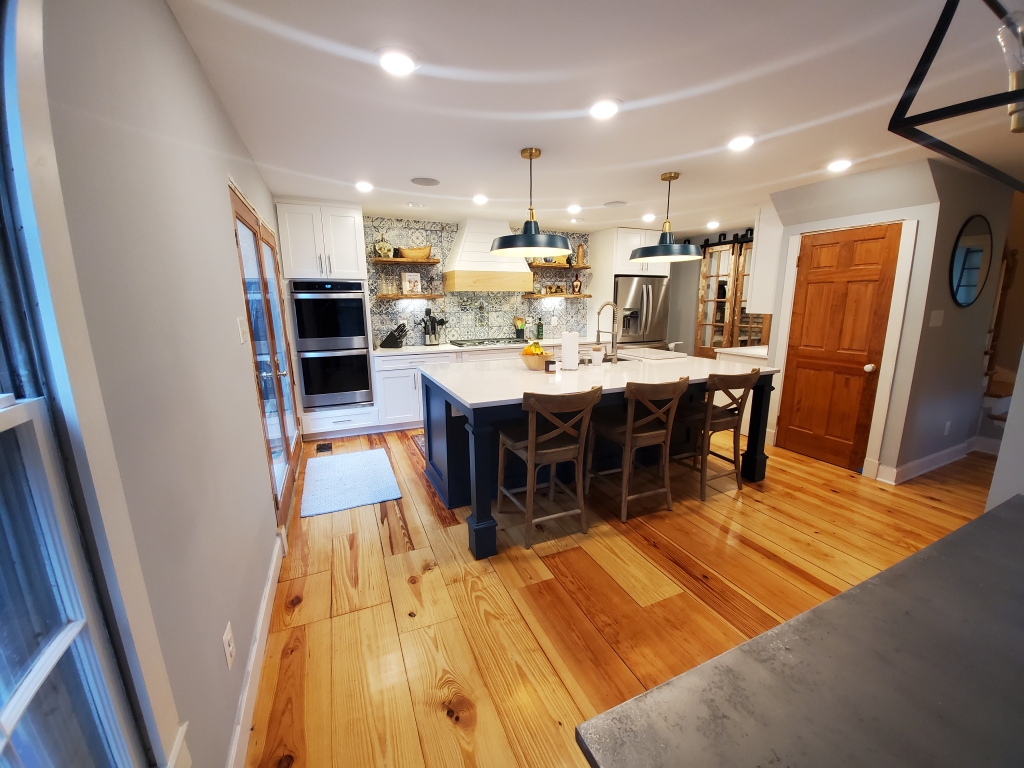There’s nothing like a warm spring day, a cold glass of something you love, and dirt under your fingernails as the smell of fresh mulch and grass fills the air. You’re probably dirty, sweating and sunburnt (and if you’re not, we need some tips from YOU!), but finishing a big day in the yard will never not be satisfying.
Landscaping is an easy way to create instant curb appeal for your home. It brings life and color to your community, greets you and your guests every time you’re outside and adds value for potential buyers in the future – especially when that means they only have to keep up your good work!

Everyone has their own idea of what perfect landscaping looks like – whether it’s a full flower and plant garden, a lawn full of lush green grass or an intricate mix of landscaping and hardscaping – and maintenance, too. But, there are a few things that all landscaping projects will need to consider no matter what.
- Get Some Spacial Awareness
The first thing to consider with landscaping is the amount of space in your yard. You have to think short and long term too – not only how plants fit now, but how they will fit 20 years from now as they continue to grow. If you are putting plants around a balcony, you might not want a plant that will shoot up eight feet in a season and overtake any other plants. Likewise, you don’t want to plant a tree right next to a house that could grow in a few years to cast a shadow over your natural light, or whose roots will grow into the foundation causing water and structural damage. When you’re thinking about multiple plants at a time, you’ll want to layer the sizes so that once they grow in, everything is cohesive and visible. You’ll also want to think about the community where you’re planting. Is one of your patches of grass the ideal bathroom spot for neighborhood dogs? Do deer frequently have breakfast in front yard gardens? Will the neighborhood kids trample the area closest to the sidewalk? You’ll want to think smart about where you place high-value plants and flowers to keep them protected and beautiful all year long.
- Take Sunlight, Water and Soil into Account
When you’re selecting plants for one or multiple parts of your yard, you’ll want to think about access to sunlight and water, in addition to the type of soil where you’re planting. We have a fairly shaded area with poor drainage off the side of our backyard, so we needed plants that could tolerate standing water after a lot of rain and only required a few hours of direct sunlight per day. Meanwhile, our front yard has a high spot that stays mostly dry and receives almost full sunlight. It’s important to get to know your yard a bit before you make landscaping plans so you can understand what will grow and thrive best. Watch how the sun moves across the house during the day and how your current yard reacts after some rain. If you want to better understand your soil quality too, home improvement stores have DIY tests that help you test the acidity and nutrient level and better understand how you’ll need to fertilize the soil in the long run. Once you’ve gathered some preliminary information, we highly recommend stopping in to your local nursery and sharing details about your yard with their staff so they can help you select some options that best fit your needs.

- Build a Yard for All Seasons
Depending on your climate, you’ll also want to consider seasonality when you’re selecting new plants. If you want to see something new in your garden all year long (including the winter!), select a mix of plants that peak at different times of the year. Some plants will flower early in the year while others will be later; leaves may come in one color in spring and change in the fall; and during the winter, some may expose colorful branches and stems while others will still provide greenery. If you have the space, try to create a mix where one of the species hits peak color every two months. One thing to look out for – make sure that the plants you select aren’t invasive, aka won’t take over your entire garden in a few years. We’d also like to slide in a quick plug for our pollinator friends, make sure to throw in some native and pollinator friendly plants as well!
- Maintenance
A critical consideration for any project – landscaping or otherwise – is how much maintenance it will take. A large lush garden sounds great in theory, but if you can’t put in the work, it will start to look a lot less great. From pruning with trimmers, hand snipping branches or seed pods, raking leaves, or cleaning up fallen fruit, every plant will require some maintenance whether it is once a year or weekly. Likewise, you’ll want to consider your ground cover. Mulch will need to be touched up once a year and weeded, grass cut and fertilized regularly, gravel cleaned out occasionally – even the lowest maintenance options need some care. If you are looking for plants that are well acclimated to your current climate and need less checking up on, you can source native plants from your local nursery or line. They don’t need fertilizer, they take less water and they restore natural habitats. We’d also recommend looking with any homeowners association requirements about how to maintain your landscaping. The last thing you want after all your hard work is a fine or a warming to remove something that doesn’t meet their guidelines.
All of these considerations will play into your approach with landscaping design and hopefully meet some of your expectations for form and function. It may seem like a lot of work for little pay off, especially if you don’t spend a lot of time outside in your front yard or only have a small patch of land to work with, but it’s an added benefit to the exterior of your home that you can take pride in.
What are you planting this year? Any other tips that you would add to ours? We’d love to hear from you!



